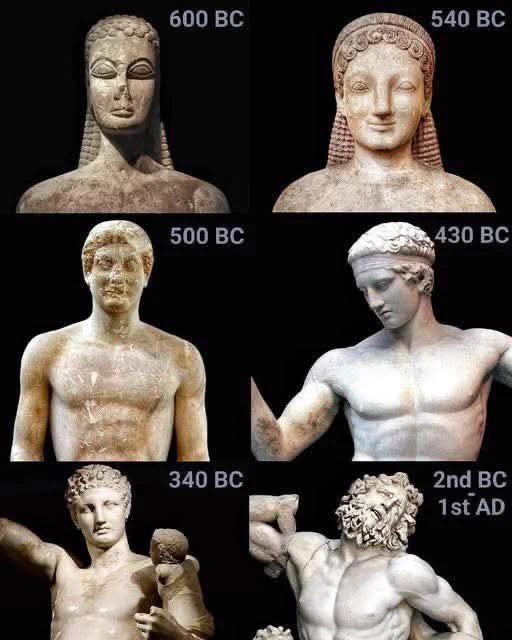The artwork, and specifically the sculptures of ancient Greece were some of most profound, artistic statements of the human form ever to emerge from society. The dedication to detail, intricacy and exemplifying the beauty of the human body was unmatched at this time. However, like all art, it was a process of slow and deliberate evolution that created the beautiful depictions of the human body that we have all come to love, and the evolution of the man in the marble is just as intriguing as the finished product.Not much is really known about this period of Greek art, as there is no writing found from this period to describe the artwork. The sculptures created were often very small objects like chariots and horses. Many of the pieces were placed in tombs and not intended for public display. It is possible that larger sculptures made at this time were constructed from perishable materials, like wood. This period was believed to have lasted from about 900-700 BC.The archaic period was believed to have lasted from about 700- 480 BC. This era saw the first depictions of the human form. These sculptures were not the beautiful, idealized depictions that would be produced later, but instead the bodies were usually stiff and rigid. The principle sculptures at this time were given the generic term of kouros, a simplified, nude sculpture of a male youth, and kore, which was a depiction of a female youth who was normally clothed. These statues were simplified, forward facing and lacked extensive detail. They were believed to have been influenced by the cultures of Egypt and south west Asia. The kouros and kore would often be depicted smiling, which was uncommon for later sculptures. These ancient greek statues would lay the ground work for later masterpieces of Greece.The classical period is thought to have begun with the sculpture known as “The Kritios Boy” in about 480 BC. This sculpture was one of the first to depict the human form in a very realistic way. The body was sculpted to reflect accurate human proportions. The marble appears as if there are defined muscles covered by taut skin, while the sculpture itself appears to be displacing its weight on one hip. This is known as a contrapposto stance and it represented a significant innovation in the representation of human beings. While the Kritios boy is regarded as the start of the Greek classical period, it in no way encompasses the entire period.The classical period saw the rise of brilliant artists like Polyclitus, Lysippos, Scopas,and Praxiteles. They all contributed to the innovation and realism that would come to constitute the Greek classical period. It is during this time that we see an obsessive eye for detail and, at times, an exaggeration of the human body. Many idealized statues can be seen with muscle definition and limb proportions that are unattainable by a human being. Many of the portrayals are god-like creations that would have been larger than life when compared to the average citizen of ancient Greece.#archaeohistories#





















